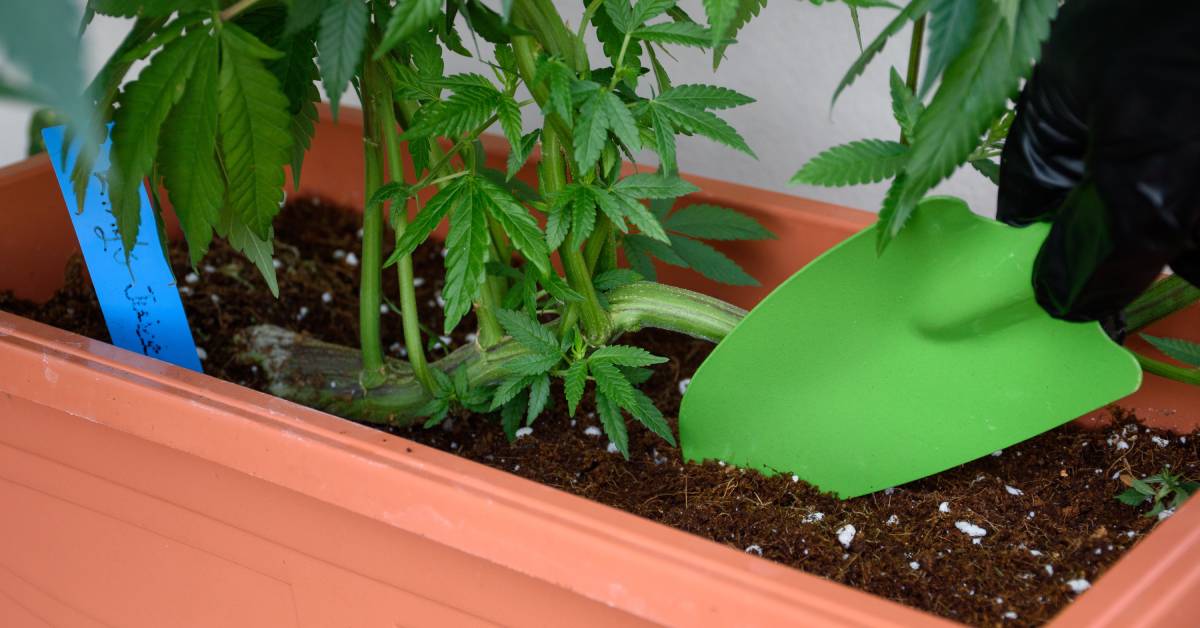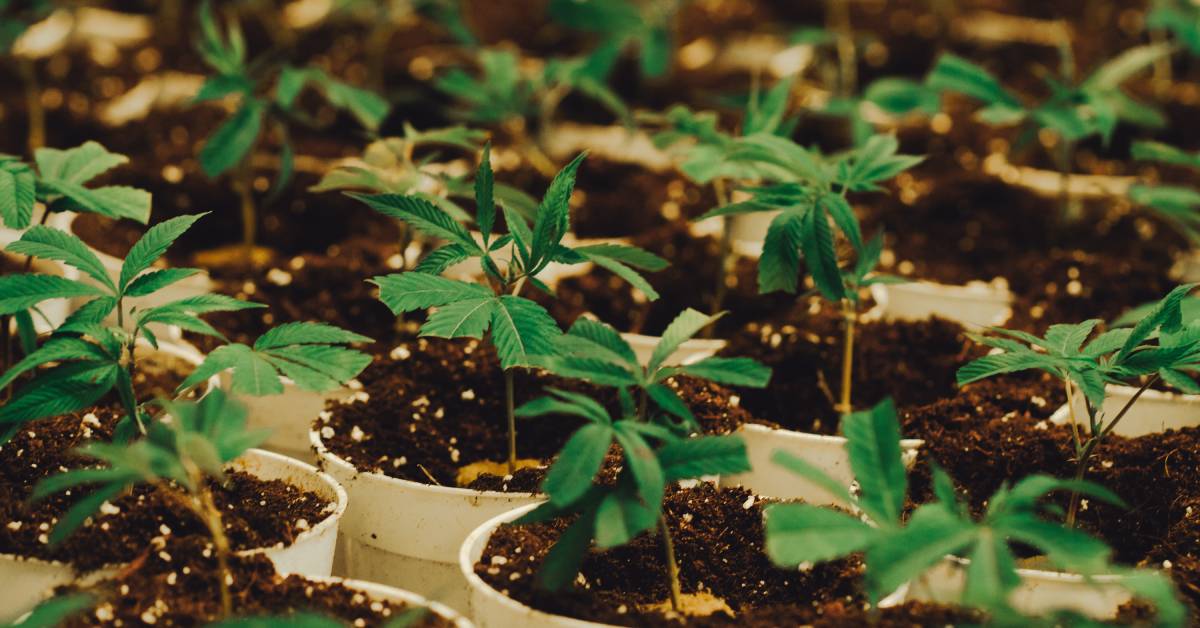The Pros and Cons of Different Soil Media
Plants need sunlight, water, and of course, soil to grow. Soil provides a nourishing environment with the nutrients plants need to survive. There are plenty of soil options to choose from that will benefit cannabis plant growth.
Different types of soil media have their own pros and cons for the plant and the gardener. Read on to learn more about the importance of soil and fertilizers for cannabis plants, and find the right soil media for your garden.
Understanding Soil Media for Cannabis

Soil media is the main contributor to water retention, drainage, nutrient-holding capacity, and pH stability. Many growers combine and customize soil to create the best base for their plants.
The type of media you choose should align with your goals, grow space, and level of experience. Whether you’re looking to expand your garden to multiple plots or want to change your water schedule, use soil that will make gardening convenient and easy.
Peat Moss
Peat moss consists primarily of partially decomposed organic material. Its main component is sphagnum moss, a mineral that accumulates in peat bogs over thousands of years. Manufacturers harvest, dry, and process this material to create a nutritious soil for cannabis growers.
The Advantages of Peat Moss
Peat moss is a popular choice for cannabis gardeners due to its excellent water retention and natural acidity. This is perfect for the specific qualities cannabis plants need to survive.
Peat moss is lightweight, easy to work with, and pairs well with other soil amendments. If mixed correctly, peat moss offers a stable environment for root systems and promotes healthy plant growth.
The Disadvantages of Peat Moss
Despite its benefits, peat moss’s ability to retain water can lead to overwatering. It can be difficult to balance water cycles with this soil media, especially for new growers still learning the nuances of cannabis hydration. Additionally, peat moss is a nonrenewable resource. This raises concerns for those who want to grow an environmentally sustainable garden.
Tips for Using Peat Moss
To maximize peat moss’s efficacy, always blend it with other materials like perlite or vermiculite. This combination improves drainage and prevents waterlogging. Be mindful of balancing its natural acidity by occasionally adjusting pH levels through supplements or fertilizers.
Coco Coir
Coco coir, also known as coconut coir, is a natural fiber extracted from the husk of coconuts. It consists of three main components, including coco pith, coco fiber, and coco chips. Each of these materials supports cannabis plants from the roots to the leaves.
The Advantages of Coco Coir
Coco coir is one of the most sustainable and versatile soil media options available to cannabis gardeners. Its excellent drainage and water-retention capabilities provide a balanced root environment because of the coco fibers that prevent soil compaction.
Coco coir is also pH-neutral, which reduces the need for frequent pH adjustments. For beginner gardeners who may not have high-quality pH tools, this is a safe soil media to use.
The Disadvantages of Coco Coir
With coco coir, however, your soil will be low in nutrients. This requires growers to use nutrient-rich fertilizers regularly. Also, because of its high salt levels, you may need to rinse coco coir before use. This could be troublesome for larger gardens or gardeners with limited time.
Tips for Using Coco Coir
To make the most of coco coir, pair it with perlite to improve aeration and drainage. Always presoak your coco coir to remove excess salts and introduce nutrient solutions suited to cannabis cultivation. While it might not work well by itself, this media is still a worthy supplement for your cannabis plants.
Perlite and Vermiculite
Both perlite and vermiculite are inorganic components widely used in cannabis gardening. They are minerals that manufacturers heat until they expand into lightweight, porous materials. This soil media works well for those seed starting their cannabis plants.
The Advantages of Perlite and Vermiculite
Perlite is excellent for aeration and drainage, while vermiculite excels at retaining moisture. Together, they help create a balanced growing environment by complementing each other’s strengths.
The Disadvantages of Perlite and Vermiculite
Perlite’s lightweight nature could quickly dislodge your plants, especially in outdoor settings with wind or heavy rain. Vermiculite, on the other hand, can retain too much moisture and lead to root rot. This forces the gardener to regulate their water schedule with extra care.
Tips for Using Perlite and Vermiculite
To incorporate perlite and vermiculite effectively, focus on achieving the right ratio. A 30 to 40 percent mix of these materials in your soil can strike a balance between good aeration and controlled water retention. If you’re using vermiculite-heavy soil media, keep an eye out for overwatering.
Soil Mixes

Premixed soil media consists of all types of soil tailored to each stage of plant growth. This way, growers can plant their cannabis plants and repot them as needed. Here are some pros and cons of premixed soil media to keep in mind as you choose the right soil for your cannabis.
The Advantages of Soil Mixes
Many cannabis gardeners choose premixed soils for their convenience and balanced composition. These mixes often contain the perfect blend of nutrients, pH balance, and soil media components like perlite or coco coir to support cannabis growth. This is especially beneficial for beginner growers who lack experience with soil ratios.
The Disadvantages of Soil Mixes
While convenient, premixed soils can be more expensive than individual components. They are also difficult to customize for professional growers who want to improve specific aspects of their cannabis plants. Additionally, some premixed soils come heavily fertilized. This could cause nutrient burn in young plants if not managed carefully.
Tips for Using Soil Mixes
When selecting a premixed soil, look for options specifically designed for cannabis cultivation. These mixes are more likely to have the proper pH and nutrient balance. Also, don’t choose the first soil mix you find! Consider experimenting with different brands to find one that aligns with your gardening style and goals.
Planting your cannabis plants in the right soil will help you achieve a healthy harvest. Whether you value sustainability, convenience, or customization, there is an option catered to your needs.
As you’re browsing soil options, you’ll also need fertilizer to boost nutrients for your plants. Browse our collection of hydroponic nutrients to feed your plants with high-quality plant food. These fertilizers work well for many beginner farms, so start planting your cannabis plants in healthy soil today!
Recent Posts
-
Climate Control Tips for Maintaining Optimal Grow Room Conditions
Growing cannabis indoors can provide a controlled environment that significantly enhances the qualit …Nov 12th 2025 -
Investing in Quality Hydroponic Supplies for Long-Term Success
Cultivating cannabis can be an incredibly rewarding endeavor, especially when you harness the benefi …Nov 12th 2025 -
Identifying and Correcting Nutrient Imbalances in Hydroponics
Hydroponics has become a popular method for growing plants without soil, mainly because of its effic …Nov 5th 2025




